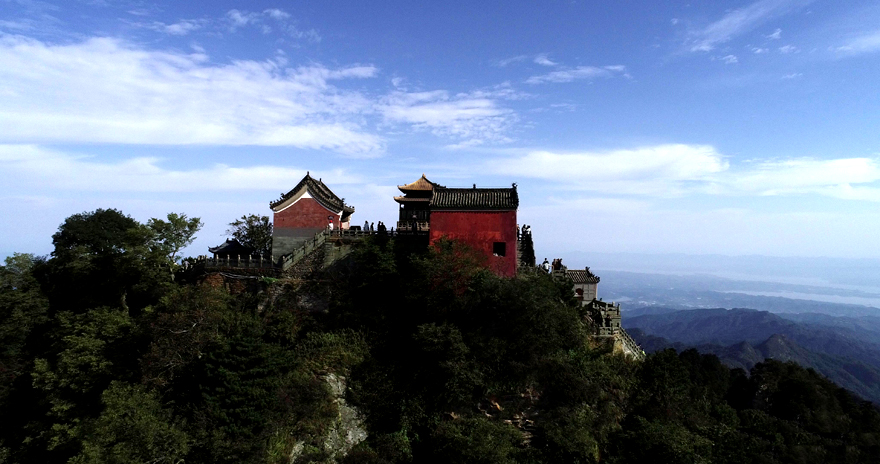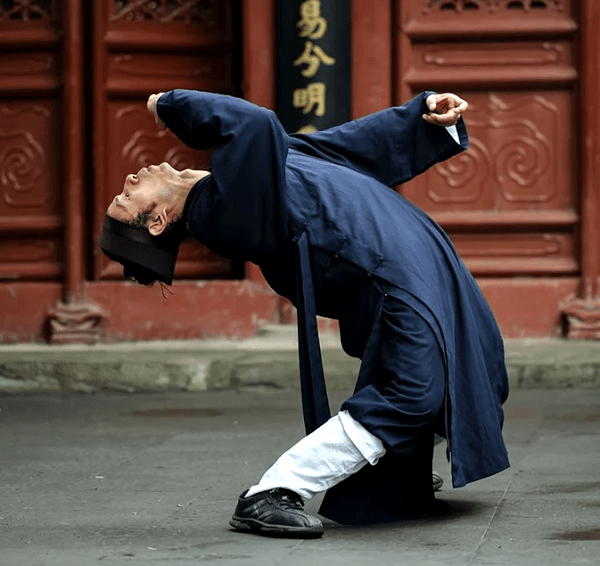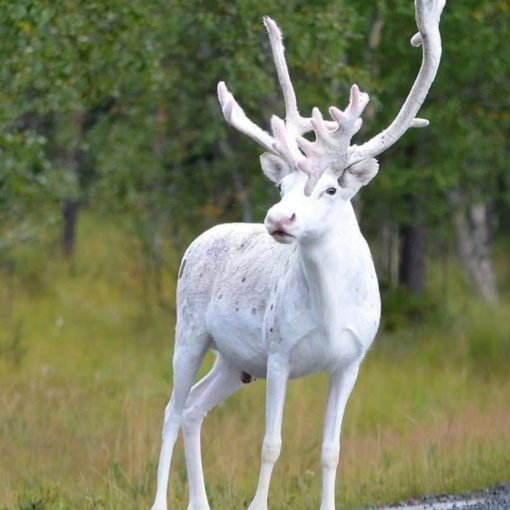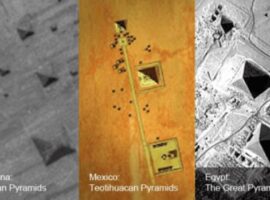Mt. Wudang, China’s Biggest Taoist Centre
武当山,中国最大的道教中心

Taoist temples began to appear in Mt Wudang since Lao Tzu and Confucius time 2,500 years ago.
道观自2500年之前,孔子和老子的时代,开始出现在武当山。
But Mt. Wudang was developed into a Daoist hub hundreds years later during the Weijin South North Dynasties (魏晋南北朝) around the 3rd and the 4th centuries. It was an age of disintegration, chaos and confusion, therefore many great individuals sought refuge in Daoism.
不过,武当山在数百年之后,约第三、四世纪时,才发展为道教中心。那是一个混乱、分裂和动荡的时代,很多英雄豪杰都投奔了道教。

Another period of fast development for Wudang was during the Tang Dynasty, as the royal family identified themselves as the descendants of Taoist founder Lao Tzu (both surnamed Li). By the end of the Tang Dynasty in the 10th century, Wudang was officially proclaimed as one of the 72 Heavenly Blessing Fields (福地) on earth.
武当的另一个快速发展时期,则是在唐朝。唐朝的皇家自认为是道教老子的后裔(姓氏都为李)。十世纪的唐朝末期,武当被正式地宣布,成为道家七十二福地之一。
But none of the honours that Wudang received can match that from Ming Chengzu (明成祖), the 3rd Ming emperor who is famously known to have built the Forbidden City in north (Beijing), structured the Daoist temples in south (Hubei) and sent the Treasure Fleets to the open sea.
不过,所有的这些荣耀,都无法与明成祖对道家的重视相比较。明成祖,明朝第三任皇帝,在北京建立了紫禁城,在湖北建立了道家庙宇,并派郑和下西洋。
Ming Chengzu ascended the throne through military coup against a popular and legitimate yet young and inexperienced emperor Jianwen (建文帝), his nephew.
明成祖通过军事政变,推翻了他的侄子建文帝,一位年轻又缺乏经验的皇帝。
Jianwen committed suicide by burning himself alive but his body has never been positively identified, thus claims of how he was rescued by Daoist Zhang Sanfeng (张三丰 the founder of Tai Chi kung fu) from Mt Wudang spread.
建文帝放了一场大火,但是没有确凿的证据表明他的遗体被找到。有一种说法是他被道士张三丰(太极功夫的创始人)所救,这种说法从武当山流传开来。
Ming Chengzu didn’t want to take a chance. He spent 14 years and sent 300,000 troops and builders into the mountain to search for the pair in the name of bestowing awards to and restoring temples for Daoist Zhang.
明成祖不想放虎归山。他花费了十四年的时间,以赐予和修观之名,派三十万士兵入山搜寻二人。
He never located the Daoist nor the young emperor, but successfully constructed 33 Daoist temples, including 17 magnificent Daoist centres.
然而他并没有找到张三丰道士,抑或他的侄子。但最终成功地修缮了三十三座道观,包含十七处道教中心。
So far 53 ancient Taoist buildings have survived the time. In 2008, Wudang Daoist College established.
迄今为止,保留下来的道教古建筑有五十三处。2008年,武当山道教学院成立。

补充阅读:
《周易》与《道德经》
I Ching, the foundation of Daoism and Chinese culture. I Ching of Zhou (周易) was created about 3,000 years ago, but it was actually produced based on older versions of I Chings.
《易经》,道教和中国文化的根基。《周易》,创作于三千年之前,事实上,它是根据更古老的版本《易经》创作而来。
But Daoism as an organized cultivation discipline is conventionally considered as stated 2,500 years ago by Lao Tzu, the author of Book of Virtue (Daodejing 道德经)
道教是一门系统性的学科,传统上来说,基于老子所著《道德经》。
Feng shui was developed during the recent two thousand years out of need to choose suitable burial sites. Treating the dead as if they were alive (视死如生) is a tradition promoted by Confucius, and the culture related to funerals and tombs flourished thereafter.
风水是近两千年来,为了选择适合的墓地而发展起来的学科。视死如有归,是孔子提倡的传统,与丧礼相关的文化也随之发展而来。
As for using feng shui principles to create more suitable living environment for people, it appeared even later in the recent 1,000 years or so.
在最近的一千年左右,人们才开始使用风水原理,打造更适宜居住的环境。
太极与气功
Tai Chi is also part of Qigong. As we talked before, qi is info-energy in yin-yang dual expressions, which are the invisible and intangible building blocks of all things in each of our universes.
太极也是气功的一部分。气,可以看作阴性和阳性能量的双重表达,它看不见摸不着,但是确是构成宇宙万物的基石。
The way to manage qi inside our body is called Qigong and the technique to manipulate qi in our external environment is known as Feng Shui.
对我们身体中的气进行运作的方法,称为气功。对我们所在的环境进行运作的方法,则称之为风水。
The fundamental difference between Chinese kung fu/exercise and the rest in the world is the association with qi. Among Chinese kung fu, there are roughly three kinds of practice according to the proportion between tangible (bodily) and intangible (qi) movements.
中国功夫和世界上其他身体的习练,本质的区别在于,是否与气相关联。在中国功夫中,根据有形(身体)和无形(气)的运动之间的比例关系,可以分成三种习练:
Those with robust physical activities are the ones we typically call Chinese kung fu (from schools of Shaolin, Wudang, Emei or other), which usually serve practical purposes of defence, offence or just body empowerment. And they consume the qi.
需要投入很多身体活动的那种,我们通常称为中国功夫(来自少林、武当、峨眉或者其他地方),这种习练的目的常常是用来防御、进攻或者是让身体更加活跃。它消耗气。
Those with little to no body moment are static kung fu, which is actually a type of meditation. They nurture the qi thus are the bases of all types of traditional Chinese kung fu.
那种几乎没有身体运动的静态功夫,实际上是冥想的一种类型。它滋养气,因此,是所有中国传统功夫的根基。
Those in between with slow and gentle movements, understandably, both empower the body and nurture the qi. Tai Chi is one of them.
介于两者之间,动作轻缓,既活跃了身体,又滋养了气。太极拳就是属于这种。
Qigong is a method to manage the qi inside our body and Feng Shui is a technique to manipulate the qi outside our body. The qi inside and outside our body are essentially the same and flow in and out of our body following each of our breath.
气功,是管理我们体内之气的方法,风水则是管理我们体外之气的技巧。人体之内和之外的气,本质上来说都是一样的,随着我们的呼吸,进出我们的身体。
The first step to reclaim the ownership of your world is to be able to control the qi inside of your body;
拿回自己所在世界的掌控权的方法,就是控制体内的气。
The second is to control the qi outside of your body in your immediate environment. If you can do that, you don’t need Feng Shui or any other hard or soft technologies to help you reshape your world.
接下来,则是控制你所在环境中的体外之气。 如果你可以做到这一点,你不需要风水,也不需要其他软硬学科来帮助你重塑世界。
The third step is to extend your awareness and your control of the qi to the entire of your universe.
第三步,则是把你的意识,以及你对气的控制,拓展至整个宇宙。
The fourth step is to get detached from all the qi in your universe and discover their true appearance and property, that is no appearance with no property. When you have reached this stage, you’ve attained nirvana.
第四步,则是脱离宇宙中的气,发现它们的真实面貌和属性,达到无色无相的境界。当你达到这个境界时,就到达了涅槃。
But this is not the end of the process. You’ll need to see the qi again, albeit by then you’ve already realised its nature is empty; and you need to be able to play around with the qi. By then you are the real master of your world and your fate.
这并不是这个过程的终点。你还是需要气,尽管你已经意识到了它的本质是空。但是这里需要你可以操控气。然后,你就成为了自己世界和命运的主人。
道家思想与现实生活
Big fish swallowing small fish is a reality on earth that is brought into existence by sentient beings’ collective desire on this planet.
在地球上,大鱼吃小鱼的实相,是由于集体意识的意愿所造成的。
The Nature in Daoism refers to a rule that governs the movement of the entire cosmos based on Taichi formation and Yin-yang balance, which is about harmony and about mutual dependence, mutual benefit and mutual growth.
道教的本质,基于支配整个宇宙运作的规律,也就是太极的形成和阴阳平衡,它是关于和谐、互相依存、互惠互利、互相生长的法则。
Regrettably, the way we are living here right now is against Law of Nature, because the current mainstream culture accepts, even appreciates, unrestrained expression and release of the so-called “human nature” that consists of a large portion of greed, anger and confusion.
遗憾的是,我们现在所居住的现实,是违背自然规律的,因为当前的主流文化接受,甚至说,推崇,对“人性”进行无节制的表达和释放,这其中很大一部分,是恐惧、贪婪、愤怒和困惑。
Laozi said in Book of Virtue:
“Only when Dao is lost, does the doctrine of morality arise;
“Only when morality is lost, does the doctrine of charity arise;
“Only when charity is lost, does the doctrine of loyalty arise;
“Only when loyalty is lost, does the doctrine of social conduct arise.”
老子在《道德经》中说过: 失道而后德, 失德而后仁, 失仁而后义, 失义而后礼 。

A scene of the sun rising with a sea of clouds in Mt Wudang, the birthplace of Daoist Wudang Kung Fu, one of the two major kung fu schools in China along with the Buddhist Shaolin Kung Fu.
日出云海:道教武当功夫发源地,这里是中国功夫两大流派之一的武当山。与之齐名的是,佛教少林功夫。

Wudang Drunken Fist performed by a Taoist from Beijing White Cloud Temple (Baiyun Guan), the headquarter of Chinese Taoist Association.
中国道教协会总部北京白云观,道士表演的武当醉拳。
原文:https://www.viewofchina.com/wudang/
翻译:Soluna



